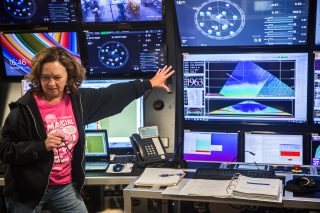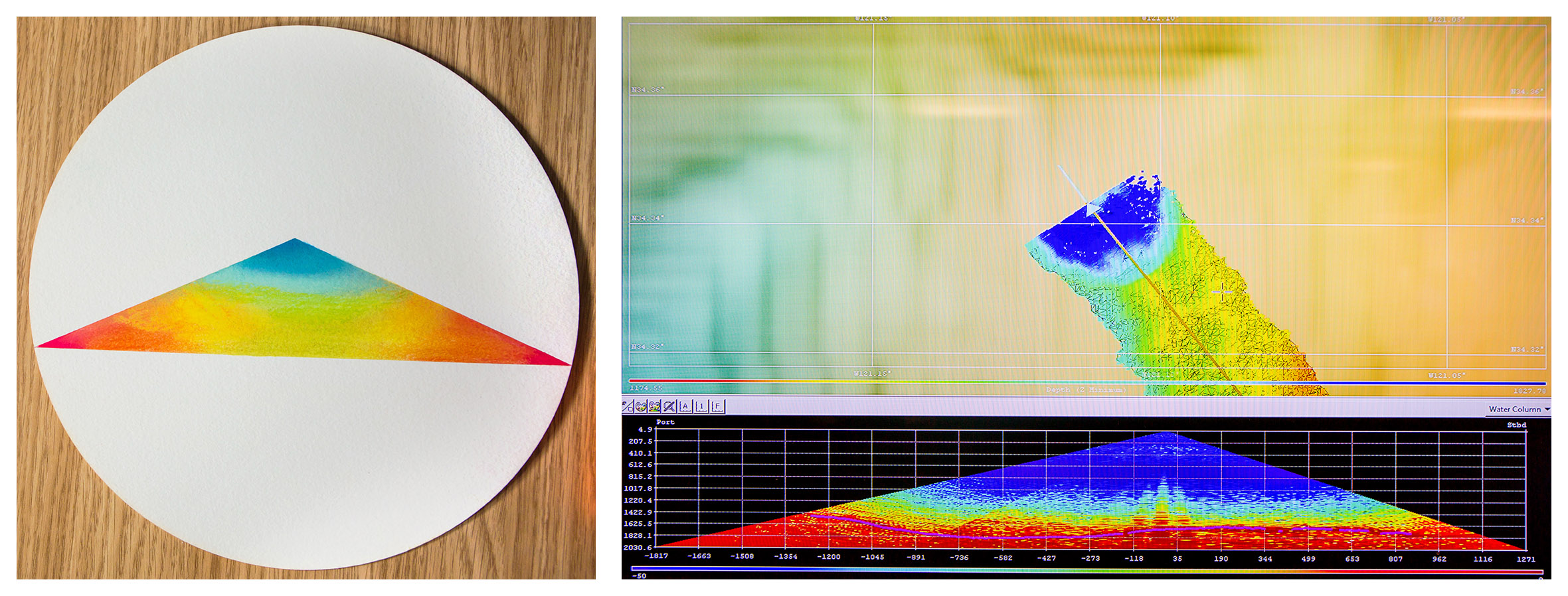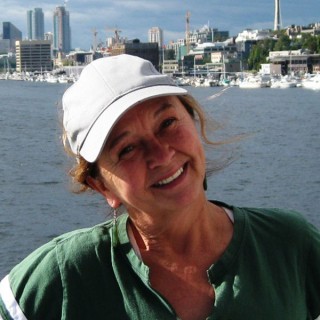It has been a short, sweet, inspiring expedition for this scientist. I have never sailed with six artists in my 25+ years as an oceanographer. As a seafloor mapping specialist, I have always valued the beauty of seafloor data, and now water column data as well. As this expedition comes to a close, I have a renewed love for mapping the oceans and the beautiful colors and imagery that we use to represent those data. That is what these six artists have taught me.

I also want to express my appreciation for the two students and all the rest of the artist/science party and Falkor team on the Seeping Cascadia Margin cruise. Many have assisted in scientific watch-standing, which has provided more time for me to examine the data we have been collecting. And speaking of data, we have collected bathymetry, backscatter and water column data along our planned transit line, in addition we conducted a survey at Nehalem bank and Astoria canyon. The seafloor and water column data will need post-expedition processing for clarification of how many new methane bubble streams we have discovered.
My colleague, Sharon Walker, and I have saying: It is not just a figure – it is a work of art. After this wonderful expedition with all these artists, I stand by that, and add that it is not just multibeam data, its a work of art! Thanks to Schmidt Ocean Institute for this insightful expedition.


